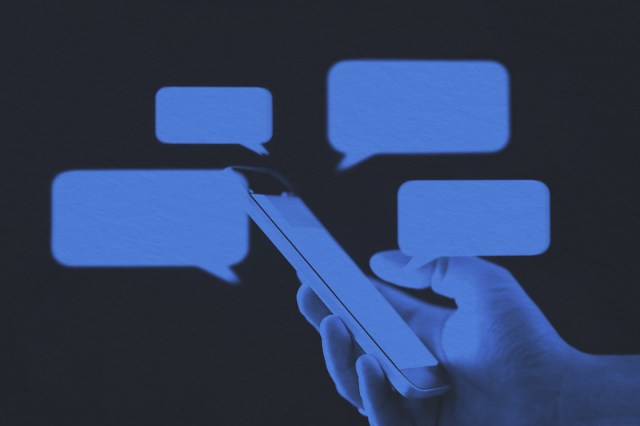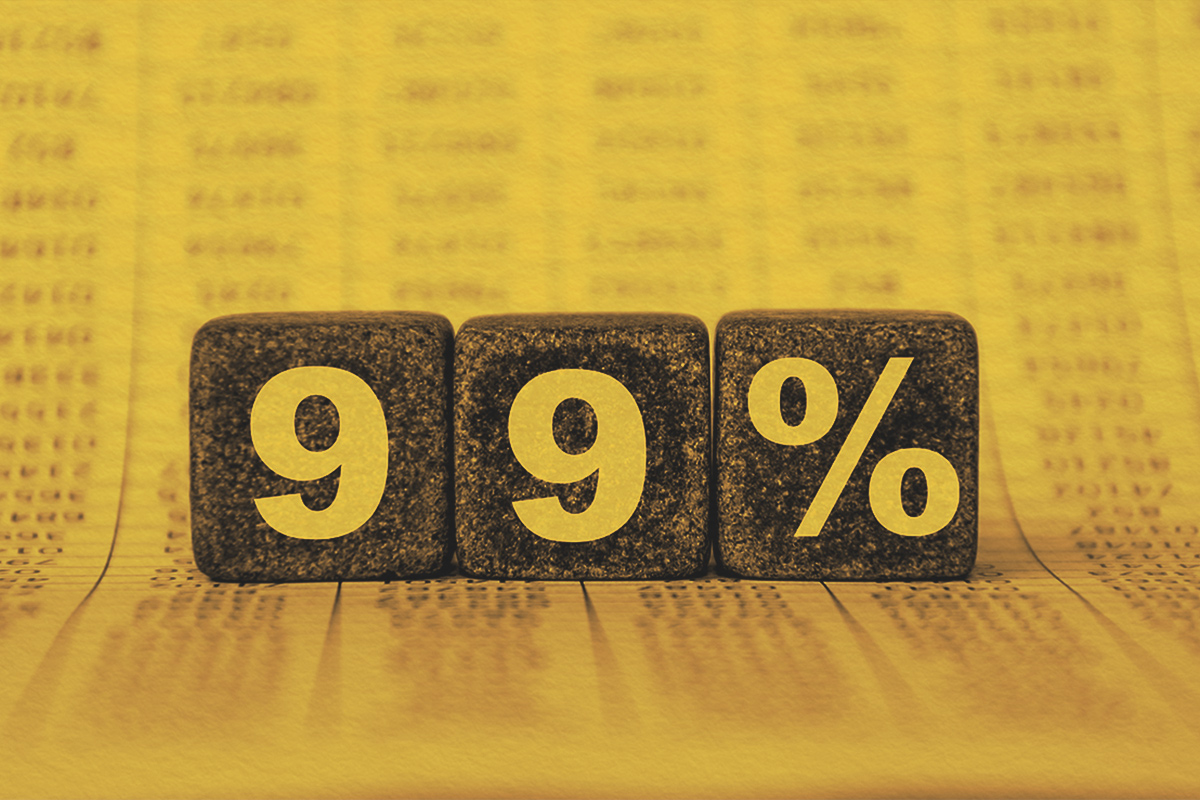
For better or worse, communication etiquette has changed with the rise of the digital world. Many experts point to the release of Microsoft Windows 95 in the mid-1990s as the turning point for this age of digital communication. It was touted as the first computer operating system for regular people — with it, anyone could operate a computer and communicate with others. Thus, an entirely new lexicon was born with its own etiquette, faux pas, and best practices. Here’s a look at some of the biggest changes during the last 30 years in digital communication. Do you follow these unspoken etiquette rules?
The practice of writing in all caps is not new. According to typography and graphic communication professor Paul Luna of the University of Reading (U.K.), humans have used capital letters to express pomp and circumstance since ancient times. Roman emperors, for example, requested monuments to be inscribed in all capital letters.
Later, all-caps writing was used for emphasis in early print advertising. Today, though, it’s widely understood in the digital lexicon to mean shouting. In a 1984 message board, a few users explained “using CAPITAL LETTERS to make words look ‘louder’” noting, “if it’s in caps i’m trying to YELL!”
A 2006 campaign to remove the caps lock key from standard keyboards was endorsed by the likes of Wired and the Chicago Tribune, but it never took off (as you’ll notice from the caps-filled rants that persist across social media). Nevertheless, monitoring your capital-letter usage remains a guideline in digital communications. And it’s not just for politeness’ sake. According to research by typography and printing expert Colin Wheildont, headlines in all capital letters are up to 37% less legible than those set in lowercase letters.
In previous decades (and centuries), sending someone multiple letters, initiating numerous phone calls, and sending a flurry of emails about the same topic (without a response) suggested a lack of communication skills. Some people feel similarly about double texting (sending a second text before receiving a reply), but it’s open to interpretation. The newest form of written communication is more concise than any of its predecessors. Could this be why we feel compelled to send multiple short texts instead of one long one?
According to a survey by the dating app Hinge, waiting four hours before sending a double text to a prospective partner is ideal, but this depends on the relationship with the person you’re texting. For a new relationship, a double text can come off as pushy, but when talking to old friends or close family, it’s often viewed as simply an extension of your previous thought — or a friendly reminder for them to respond to you. Double, triple, and quadruple texts are normal in the latter scenario.
With unlimited space available in a messaging app, some folks prefer to send long messages with all their thoughts in one missive. Others (often those who came up in the limited-character text days) send a new message for each sentence. Neither method is necessarily impolite or incorrect, but if your friend has a particular way they prefer to receive alerts, they might let you know. That’s part of digital etiquette as well — everyone is responsible for setting their alerts and do-not-disturb windows for their own needs.
Punctuation rules have fallen to the wayside during the digital age, and we no longer need a subject-verb-object to form a sentence when communicating via text. Sentence fragments and one-word replies are perfectly acceptable. Take this texting conversation, for example:
Are you on your way
Coming
👍
The response is a sentence fragment, there’s no period at the end of it, and the retort is a single thumbs-up emoji. Yet the exchange is completely clear and no one bats an eye (except perhaps an English teacher). Periods are generally only used at the end of sentences when there are multiple sentences in a single text; using one at the end of a single sentence is akin to slapping someone in the face. (OK, it’s not quite that dramatic, but it is understood to be rude and abrupt.)
Trillions of text messages have been sent since cellular texting debuted in 1992, and more abbreviations and acronyms spawn from this form of communication every day. Shortening words and phrases was essential to early texting because most cellphones had a 160-character limit per message. Now, shortening your thoughts is the norm, and it’s almost passé to write some terms out in full, such as “laughing out loud” versus “LOL” and “to be honest” versus “TBH.” Some abbreviations are actually more popular than the full words, including “ppl” versus “people” and “ur” versus “you’re.”
However, it’s still best practice to keep readability at the top of mind. Confusing, multiuse, and obscure abbreviations and acronyms can lead to crossed wires, so pay attention to context and your audience. For example, “IG” can mean “I guess” or “Instagram.” When in doubt, don’t use a shortener if you aren’t sure your audience will know what it represents.
Ah, the ellipsis … Some younger texters fear it, while others revel in it (including many Gen Xers). For those who use it frequently, it replaces other types of punctuation — this is likely a holdover from typing days, when a dot-dot-dot would be a more efficient way to start a new thought than a hard return to a new line.
Grammatically, an ellipsis represents the omission of a word or phrase, or indicates that there is more to be said. It’s the latter usage that gives some people the feeling that an ellipsis implies a negative connotation. There’s something being left out on purpose, or something bad is coming. For example, “Let’s meet up later…” might just be an invitation to hang out, or it could be read as a precursor to receiving bad news.
Just as with capital letters, pay attention to your ellipses usage. To some, “OK…” means the same thing as “OK” (sans punctuation), but to others, those three dots contain a world of nuance. This can cause misunderstandings between generations, so it’s important to remember who your audience is.
Tone is easily misconstrued over digital communication, but the exclamation point mitigates this. To end a sentence on a positive note, many people add an exclamation point. An exclamation point turns “sounds good” into “sounds good!”
While it’s widely used today, the exact origin of the exclamation point is unknown. One theory indicates that it’s derived from Latin, where an exclamation of joy was written with an uppercase “I” above an “O.” In 1970, it gained a place on the keyboard; before this, it was styled with an apostrophe over a period. Over the last three decades of digital typing, its meaning has transformed. Exclamation points rule digital communication as an indicator of politeness or good intentions. In regular prose, the punctuation might indicate any sort of heightened emotion — anger, excitement, and fear included. But that’s now the domain of ALL CAPS in text. Exclamation points are by and large indicators of goodwill. Even using two (or more) exclamation marks conveys a generally positive connotation. You’re not yelling — you’re just being extra solicitous!!




















